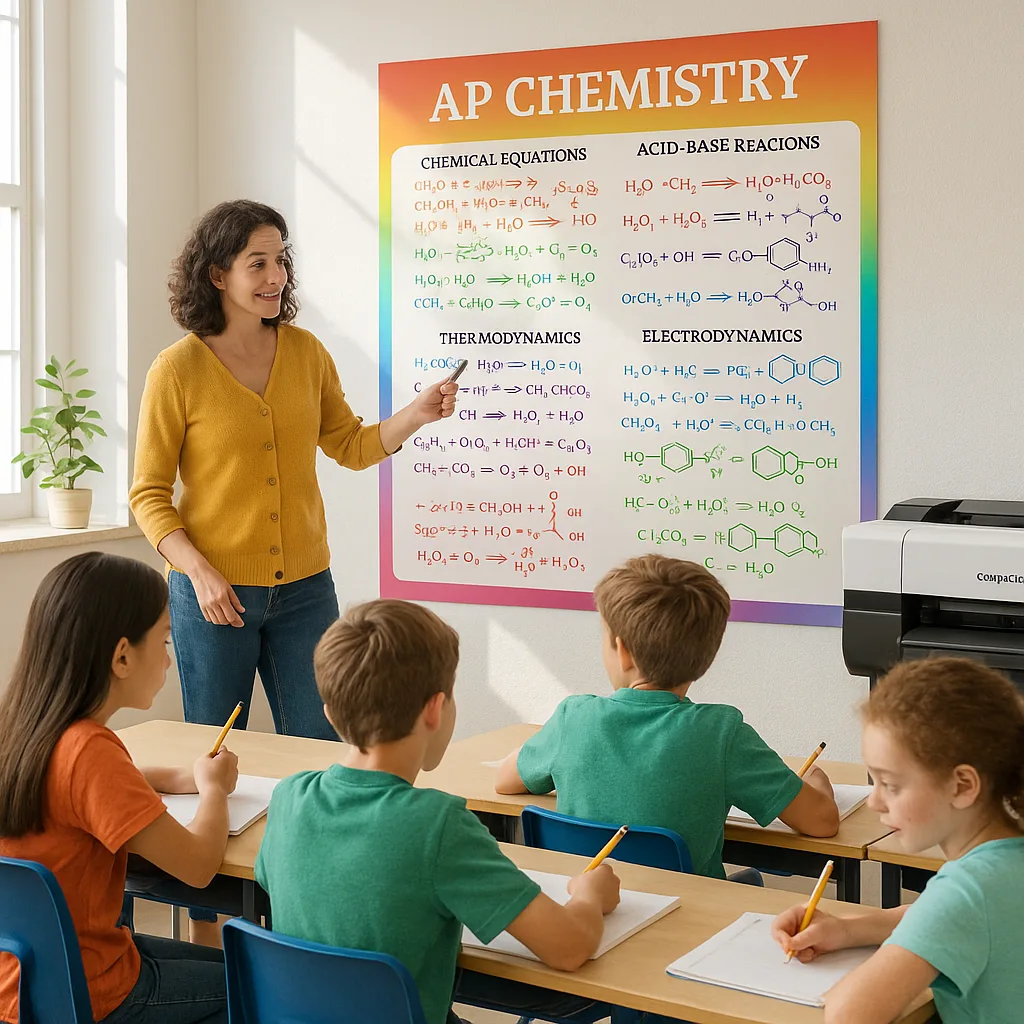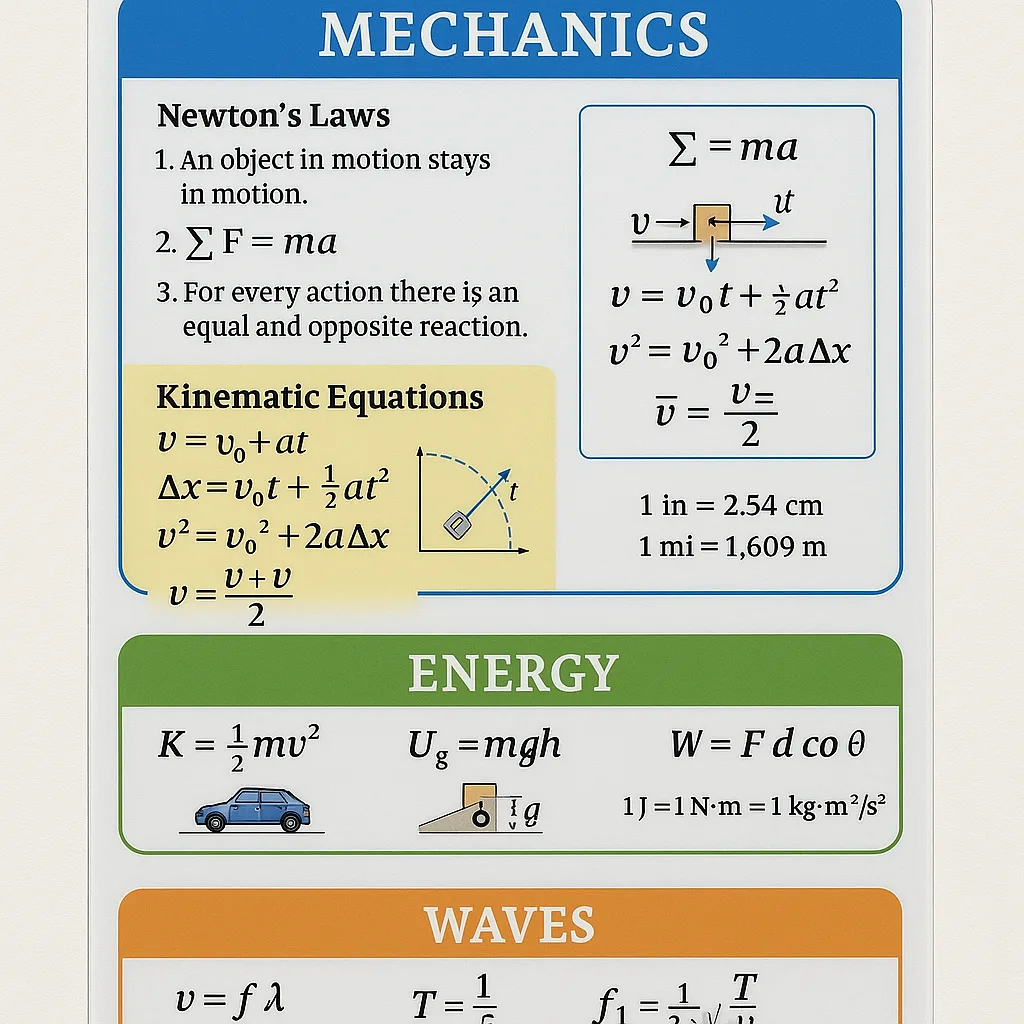Poster Makers for AP Study Guides | Visual Learning
Transforming AP Success with Visual Study Guides
As an educator who’s spent countless hours helping students navigate the rigorous world of Advanced Placement courses, I’ve discovered a game-changing approach: poster makers for AP courses that transform dense curriculum into digestible visual references. Let me share how these powerful tools are revolutionizing the way students prepare for some of their most challenging academic experiences.
Remember the first time you walked into an AP classroom? The sheer volume of information can feel overwhelming—for both teachers and students. That’s where visual learning becomes transformative. By condensing complex concepts into carefully designed reference posters, we create lasting resources that students return to throughout the entire academic year.
Why Visual Study Guides Matter in AP Courses
Advanced Placement courses demand a unique approach to learning. Students must master vast amounts of information while developing critical thinking skills that prepare them for college-level work. Traditional study methods often fall short when dealing with this complexity. However, visual study guides created with poster maker machines offer several distinct advantages:
First, they provide constant reinforcement. Unlike notes buried in binders, wall-mounted reference posters remain visible throughout the school year. Students absorb information passively during class discussions, gradually building familiarity with key concepts. This continuous exposure strengthens retention without requiring dedicated study time.
Second, visual guides accommodate different learning styles. While some students thrive with traditional text-based materials, others need visual representations to truly grasp complex ideas. By incorporating diagrams, flowcharts, and color-coded systems, we create inclusive learning environments that support every student’s success.
Third, these posters serve as collaborative tools. During group work or class discussions, students naturally reference these visual aids, fostering peer learning and deeper engagement with the material. I’ve watched quiet students suddenly become discussion leaders when they can point to a formula or timeline on the wall to support their arguments.
Poster Makers for AP Courses: Subject-Specific Strategies
Creating effective AP study posters requires thoughtful planning and subject-specific approaches. Let me walk you through strategies for the most popular AP courses, drawing from years of classroom experience and student feedback.
Creating Timeline Mastery for AP History
AP History courses—whether World, European, or U.S. History—require students to understand complex chronological relationships. Timeline posters created with quality poster maker machines transform abstract dates into visual narratives that stick.
Rather than creating one overwhelming timeline, I recommend thematic approaches. For AP U.S. History, consider separate posters for political developments, social movements, economic trends, and cultural shifts. This layered approach helps students understand how different historical threads interweave.
Color becomes your most powerful tool here. Use warm colors for periods of growth or positive change, cool colors for conflicts or challenges. Add icons or small illustrations at key points—a factory for industrialization, a ballot box for suffrage movements. These visual anchors help students remember not just when events occurred, but why they mattered.
Don’t forget to leave white space for student additions. Throughout the year, as students discover connections or want to add details, they can contribute to these living documents. This active participation deepens their engagement with the material and creates a sense of ownership over their learning environment.
Design Principles for Effective AP Study Posters
Creating truly effective AP study posters requires more than just good content—it demands thoughtful design that enhances learning rather than hindering it. Through years of refinement, I’ve developed key principles that consistently produce results.
Hierarchy Matters: Your most important information should dominate visually. For formula sheets, make the formulas themselves the largest elements, with explanations in smaller supporting text. This allows quick scanning during problem-solving while providing context when needed.
Consistent Color Coding: Develop a color system and stick to it across all your AP materials. When students see green, they should immediately think “definition.” Blue might indicate “example,” while orange highlights “common mistakes.” This consistency reduces cognitive load and speeds comprehension.
Strategic White Space: Resist the urge to fill every inch. White space isn’t wasted space—it’s breathing room that prevents overwhelm and guides the eye naturally through information. I aim for 30-40% white space on any study poster.
Interactive Elements: Consider adding QR codes linking to practice problems or video explanations. With modern poster makers for schools, you can easily incorporate these digital bridges that extend learning beyond the physical poster.
Implementation Strategies That Work
Simply creating beautiful posters isn’t enough—you need strategic implementation to maximize their impact. Start by involving students in the creation process. When they help design these resources, they’re already learning the material and developing ownership.
Position posters thoughtfully around your classroom. Place formula sheets near problem-solving areas, literary device references by discussion spaces, and timelines along traffic paths where students naturally pause. This intentional placement reinforces learning through environmental design.
Regular reference during instruction is crucial. Point to specific posters when introducing related concepts, encouraging students to develop the habit of using these visual aids independently. I often start classes with “poster tours,” where students find and explain different elements, keeping the information fresh and relevant.
Consider creating mini-versions that students can keep in their notebooks. Our Classroom Pro 24 Poster Maker makes it easy to print both wall-sized references and personal copies, extending the reach of your visual aids beyond the classroom walls.
Measuring Success: Assessment and Iteration
The data speaks for itself—visual study guides created with quality poster maker machines dramatically improve AP outcomes. But success requires ongoing assessment and refinement.
Track how students interact with your posters through informal observations and formal assessments. Do they reference specific posters during tests? Which ones generate the most questions or discussions? This feedback helps you refine designs for maximum effectiveness.
I conduct mid-year surveys asking students which posters they find most helpful and what additional information they’d like to see. Their responses often surprise me—sometimes the simplest designs prove most valuable, while elaborate creations go unused. This iterative process ensures your visual aids evolve with student needs.
Don’t hesitate to update posters throughout the year. As students master certain concepts, you can add complexity or shift focus to emerging challenges. The flexibility of in-house poster makers for schools makes these updates affordable and immediate, unlike outsourced printing that locks you into static designs.
Getting Started with Your AP Visual Study Guide Program
Audit Current Resources
Identify gaps in your visual materials
Plan Your Designs
Create templates for each AP subject
Test & Refine
Gather student feedback regularly
Scale Success
Share templates across departments
Ready to Transform Your AP Classroom?
The journey to creating effective AP visual study guides starts with the right tools. Quality poster makers for AP courses empower you to design, print, and iterate on materials that truly support student success. From formula sheets that clarify complex calculations to timelines that bring history to life, these visual aids become integral parts of your teaching toolkit.
Join thousands of educators who’ve discovered the power of in-house poster creation for AP success.


